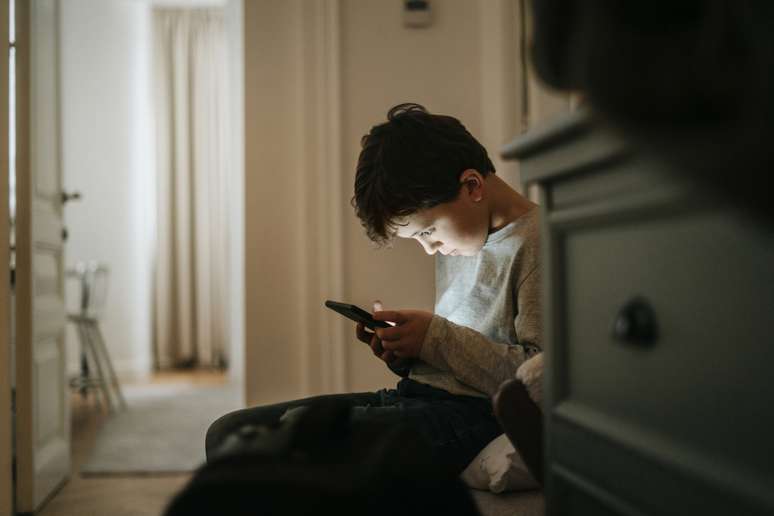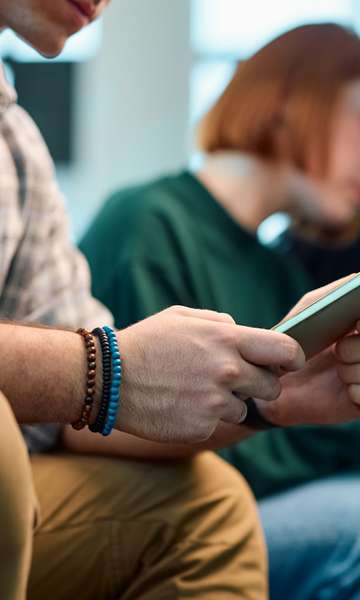In Brazil, for the first time anxiety records in children and adolescents have surpassed those of adults: why is this happening?
Parents, educators and health workers have already noticed that the current generation of young people is more anxious than previous ones, but a new investigation conducted by the Folha de S.Paulo newspaper last week reveals that records of anxiety in children and adolescents have exceeded those of adults for the first time in Brazil.
Folha used data from the SUS Psychosocial Care Network (RAPS) from 2013 to 2023. The rate of anxiety disorders among 10-14 year olds is 125.8 per 100,000, while among adolescents it is 157 per 100,000, exceeding the record for adults, i.e. 112.5 per 100 thousand, all data from 2023.
The numbers reflect on what could impact young people’s mental health, with a particular focus on anxiety disorders. It is clear that we are faced with a multifactorial issue.
The World Health Organization (WHO) has reported an increase in cases of anxiety in the Brazilian population over the last decade, considering the country as one of the most anxious in the world. This scenario also reflects on the mental health of young people.
Income concentration, poverty of a large part of the population, social insecurity, political polarization, perception of corruption and impunity, crime, violence, discrimination, prejudice, machismo, racism and pandemic are some of the factors that help understand why anxiety seems so popular in Brazil.
In the case of young people, the impact that the use of screens and technologies, especially social networks, has on emotions and behaviors is also discussed. The most connected generation in history is also the one that seems most vulnerable to the risks that online life can entail.
Networks are the “place” where young people meet. It is there that they inform themselves, publish their photos, expose themselves, see others, compare themselves, demand themselves and get frustrated. They obviously have fun and enjoy being there, but in general they have few resources and filters to understand when they are taking too long or getting sick from overuse.
Self-esteem and self-acceptance issues are common among younger people, and the immaturity and lack of experience that comes with age can make it difficult for them to realize that networks are not the most faithful translation of reality, but rather an edited and modified version. improved version of what is shared. Beautiful people, incredible places, amazing food, success, luxury, perfect love and happiness can do more harm than good to those who are most emotionally vulnerable.
Furthermore, cyberbullying and other forms of violence have reached an unprecedented level in the virtual world. The search for recognition that is not enough for everyone, the unattainable dream of thousands of followers, the distorted and idealized standards of the body and beauty, all of this can have a negative impact on young people.
While having a little anxiety and sadness every day makes us human, the excess, intensity and frequency of these emotions can lead to symptoms that, if left untreated, can lead to an episode of anxiety disorder or depression .
While technology is not solely responsible for anxiety among young people, it certainly plays an important role. In the book “The Anxious Generation: How a Hyper-Connected Childhood Is Causing an Epidemic of Mental Disorders”, the American psychologist Jonathan Haidt highlights the central role of mobile phones in the crisis we are experiencing.
The data brought by Folha also reveal a significant increase in rates of depression and suicide among girls between the ages of 10 and 14 (higher than among boys of the same age group). The same phenomenon happens in relation to anxiety. It is worth mentioning that while boys tend to use mobile phones to access more videos and games, girls look more to social networks, where they may feel more pressured about appearance, body and role models what is expected of them.
Other results of the survey show that, when the topic is school, there is a worsening over the years in feelings of loneliness, social exclusion and the perception of belonging to the school environment among students.
Young people receive more than 200 notifications on their cell phones: is too much bad for their health?
To try to reverse this trend there is no ready-made formula, but we can think of some indications on what can be done. Raising the age of a child’s first contact with technology (especially social networks), controlling screen time more effectively, and educating people on the best ways to interact with their mobile phones are some of these ideas. Ideally, this process should be done jointly by parents, children, schools and large digital platforms.
But it is important that other discussions are also taken into account when talking about young people’s mental health. Violence, prejudice, discrimination, education, life plan, quality of affection and construction of an active channel of dialogue with parents and guardians are keys to this change. All of this should help create a less anxious and, perhaps, happier generation.
*Jairo Bouer is a psychiatrist and writes weekly for Terra Você.
Source: Terra
Ben Stock is a lifestyle journalist and author at Gossipify. He writes about topics such as health, wellness, travel, food and home decor. He provides practical advice and inspiration to improve well-being, keeps readers up to date with latest lifestyle news and trends, known for his engaging writing style, in-depth analysis and unique perspectives.








-vf3no13sgaqt.jpg)

